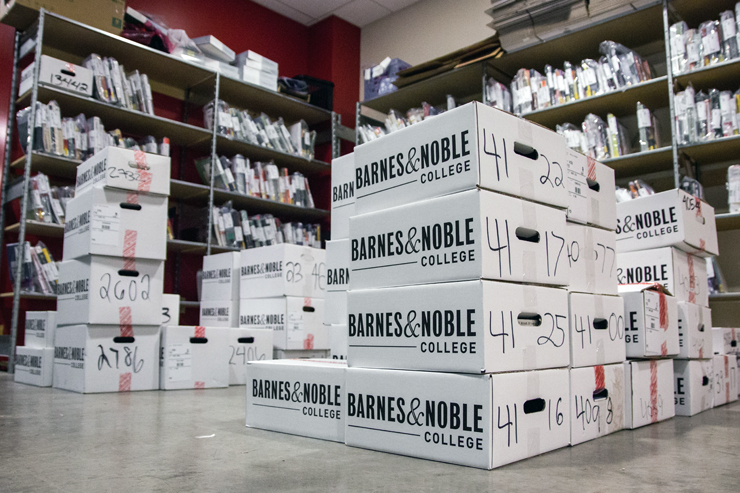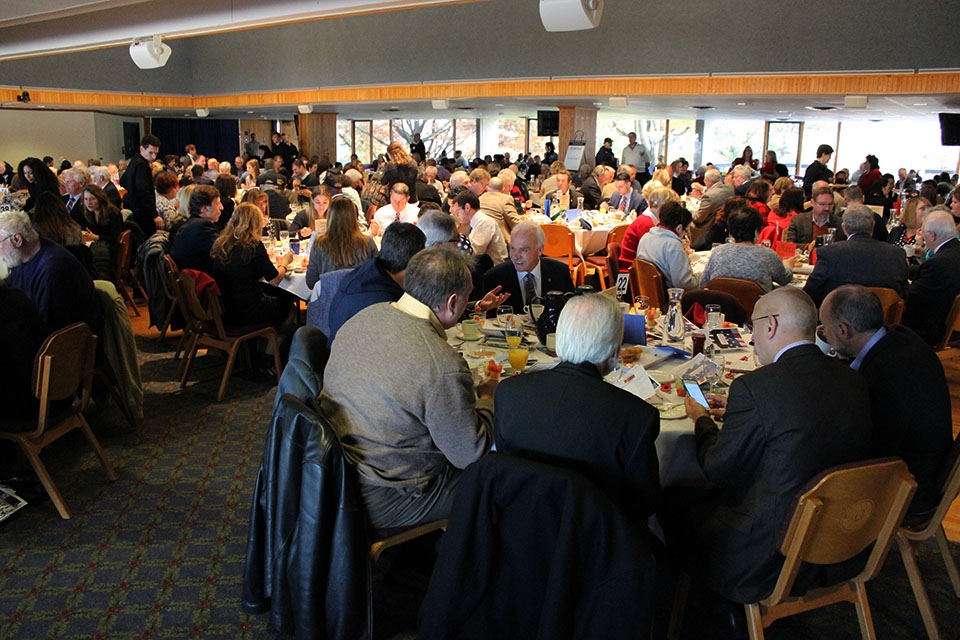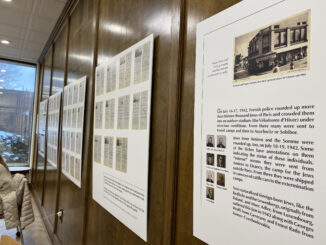Ollie Gratzinger | Opinions Editor
10/11/18
After almost two years, Amazon Studios’ science-fiction thriller returned with its third season, and The Man in the High Castle is better than ever.
Following a startling premise that supposes the Axis had won World War II, High Castle displays a world rife with near-unthinkable horrors. The majority of eastern America has become the Greater Nazi Reich (GNR) under German influence, while the west is controlled by Japan and known as the Pacific States. In between the two falls a buffer territory called the Neutral Zone, which looks a little like a dystopian take on the Wild West.
A small amount of time has passed since the end of the second season, which left off in the autumn of 1962. It’s springtime, now, and even though winter has come and gone, its chill remains in more ways than one.
The Antithesis of Old and New
Viewers are treated to characters who are grittier, more frightened, more driven, more desperate and more broken than before. Season 3 draws from the pages of Philip K. Dick’s 1962 classic by the same name more than the previous seasons have, emphasizing good old-fashioned sci-fi rather than exclusively historical alt-world fiction. The two genres blend in a unique symbiosis sure to please even the most dedicated fans of either style.
The settings, too, are more shadowed than before. Familiar spaces are shot in a different light for an effect that feels almost trancelike and surreal. Ambient noise, like traffic passing by, sirens and idle chatter convey a sense of uncanny realism. New settings, like the Smith family’s grand apartment, offer up an air of unease. Things have changed.
New characters, like the love-to-hate-him Minister of Propaganda Billy Turner (Giles Panton), Reich reporter Thelma Harris (Laura Mennell) and the Man in the High Castle’s better half, Caroline Abendsen (Ann Magnuson), blend new faces with old allusions to the novel, while recurring characters all assume new roles as they’re pushed to their breaking points.
Joe Blake (Luke Kleintank), after undergoing a series of “rehabilitation” tactics in Berlin, returns to America having been fundamentally altered. His alias, Joe Cinnadella, is a reference to the book, and he suffers the same fate as his namesake in a slightly different, albeit effectively traumatizing way.
Any die-hard Joe fans might feel cheated because of the way his arc unfolds, especially considering how important his character has been up until now, and how popular his affection for protagonist Juliana Crain (Alexa Devalos) has been among fans. It was a bold and daring move on the writers’ part, but ultimately, what happens to Joe is necessary.
Juliana was once a quiet and relatively obedient citizen of the oppressive Pacific States, where she’d lived with her boyfriend Frank Frink (Rupert Evans). When she killed a man in self-defense in the first season, it tore her apart, but by Season 3 she kills with a practiced ease, all too telling of the way her traumas have begun to impact her.
Nonetheless, she’s motivated, driven and inspired by the faintest ray of hope, which comes to her in the form of an enigmatic film telling of a better world in which the Nazis lost. Her mission? To spread that spark of hope around the Neutral Zone and inspire an otherwise complacent civilian population to take action against the regime.
Season 3 is also by far the bloodiest season, and objectively the most shocking in terms of who dies and how. In a way that almost resembles the bloodlust of Game of Thrones, the writers take no prisoners.
One death in particular at the end of episode one, “Now More Than Ever, We Care About You,” came as a shock, and another at the end of the second episode, “Imagine Manchuria,” changed the way we view a central character. Episode five, “The New Colossus,” has been the most controversial in terms of fans who either loved the twist or hated it, but honestly, the constant fallout keeps the show’s shock values and deeper meanings from getting lost in the throes of an often-disorienting political plot.
Symbolism and Catharsis
Known for its symbolism, The Man in the High Castle kept up appearances throughout its third season. Chief Inspector Kido (Joel de la Fuente), for example, took a covert mission under the alias Baku. In Japanese folklore, a baku is a supernatural being that devours nightmares, but if it remains hungry afterward, it’ll consume hopes and dreams as well. Given the way Kido’s narrative unfolds, especially regarding Frank Frink, the analogy is as fitting as it is sinister.
Other motifs, mainly that of the rising sun, encourage hope and revolution, while the recurring silhouette of a man wearing a hat might foreshadow doom for a set of key characters in upcoming seasons. That much, however, is just wishful thinking.
Among the most haunting scenes of the series comes in the sixth episode of Season 3, “History Ends.” A new addition to the show is Sabra, a secret Jewish community hidden away in the mountains of the Neutral Zone. After reaching catharsis, one character that fans are sure to recognize becomes bar mitzvah. Marking the coming of age of a Jewish boy, the ceremony usually takes place when a child reaches the age of 13, but in a world controlled by fascists, it hadn’t been an option for him until much later.
His celebration, complete with singing, dancing, laughter and talk of overcoming adversity to embrace the beauty within traditions of old, is juxtaposed over a chilling Nazi ceremony inducting a new Reichsmarschall. The leaders of the GNR talk about destroying history to make way for a new future steeped in Nazi doctrine, while the thriving Jewish community reminisces and embraces the past. The scene highlights everything that Season 3 is about: Hope, freedom and active resistance against a tyrannical state.
Love, Loss and Liability
Trade Minister Nobusuke Tagomi has always been a man of peace, despite his high-ranking position in Imperial Japan. He’s a traveler; through meditation, he can traverse the astral plane and pop up in the other world, which the Nazis call Die Nebenwelt. His ability to travel, though, plays a less important role in Season 3 than it did in Season 2, and he copes more with the uncertainties of his current reality than the facades of the other.
A romance befalls the old Trade Minister, and its sweetness contrasts the looming threat of death and warfare in a refreshing yet unsettling way. In the world of High Castle, love invites in loss, and for characters who have already lost so much, it’s hard not to wonder if love will guide them or break them.
For the first time in the series, though, new storylines emerge to explore the complexities of life for gay men and women living in the Neutral Zone and the Reich.
Ed McCarthy (DJ Qualls), long-time friend of Juliana and Frank, fled to Colorado with Robert Childan (Brennan Brown) to escape a series of bloody reprisals happening in San Francisco. In the Neutral Zone, Ed meets a cowboy named Jack (James Neate), and the pair quickly hit it off. Ed comes into a new freedom he didn’t have in California. For the first time, it starts to look like he has the potential to be genuinely happy. That is, if nothing goes wrong.
Back in New York, things are different. Propaganda filmmaker Nicole Dormer (Bella Heathcote) finds an unlikely lover in Thelma Harris. A raid at a lesbian bar threatens trouble, and even the wealthy, Aryan elite Nicole’s luck runs out, too. Yet another twist at the end of Season 3 leaves the audience to wonder if she’ll ultimately find herself stuck with the same fate as Joe Blake.
To add to the mix, the notorious Smith family is struggling to come to terms with the loss of their teenage son, Thomas, who martyred himself to the Reich at the end of Season 2 after learning he had a congenital disease. Helen Smith (Chelah Horsdal) goes through every stage of grief over the course of the season as she mourns her son, most notably a deep and seemingly impenetrable depression.
John Smith (Rufus Sewell), recently promoted, is grieving differently, all while trying to hold his family together and raise his two young daughters. Even at the peak of his political career, Smith’s life is coming apart more and more with every episode. The floor of rock bottom, for him, is made of glass, and the soles of his Wehrmacht boots weigh heavily upon it.
Sewell brings a jaw-dropping intensity to Smith’s character, which can be found in the subtle ticks and twitches that show a deeply traumatized and complex man. Perhaps one of the most well-fleshed-out characters of the series, Smith differs from the other bad guys in the sense that he knows what he’s doing is wrong, and he hates himself for it. Sewell calls him “a good guy trapped in a bad guy.”
Time and time again, he’s justified his actions by saying he’d spilt blood to keep his family safe, but no one is safe anymore, and while he has everything a Nazi could want, the people he claims he did it for are being taken from him in one way or another. He can’t justify his evil, especially after yet another mystic film shows the happy, apparently kind man he became in the other world.
Smith is really the unreliable narrator of his own story, and while it’s satisfying to watch his backward politics and twisted convictions come back and bite him in the rear, it’s difficult not to pity the person he could’ve been, but wasn’t.
Throughout Season 3, he’s tormented by a series of cinematic and haunting nightmares whose allusions to real-life history remind the viewer of High Castle’s most eerie feature: The Nazis were and are real. The things they did were done to real people, and there exist some in the world today who want to see that they’re done again.
A Political Statement
The Man in the High Castle comes during a time of heated, real-world political debate, marked by an alarming upward trend in right-wing nationalism. The series, chillingly intertwining 1960s Americana with Nazi symbolism, showcases a civilian population that has become largely complacent. They’ve accepted their new world as the new normal, and in doing so, they’ve allowed evil to not only settle, but to flourish.
A rally of Nazi-inspired youngsters took place in the season finale, “Jarh Null,” hauntingly reminiscent of the deadly Charlottesville fiasco that happened in America last year. High Castle asks its viewers, “What if it happened here?” but it also encourages them to ask themselves, “Is it happening here right now?”
With references to peaceful protest and political street art, the series goes far beyond the realm of science fiction, crossing genre lines in a way that that encourages its viewers to be self-aware and ever-conscious of the political landscapes in which they live. Characters like Smith show that evil doesn’t always look like we might expect it to, with sharp teeth and claws ready for the killing. Sometimes, evil looks like a man making breakfast for his daughters before putting on his Nazi uniform and going to work. That doesn’t make him any less of a monster, only a different kind.
Season 4 is already in the works, and if it’s anything like its trio of predecessors, it’ll raise the bar even higher.




